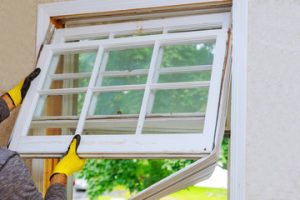Building a luxury pool is more than just adding an outdoor experience to your home; it’s an investment in your lifestyle and property value. Working with a professional, experienced team is the best way to maximize your investment and create an incredible space you and your family can enjoy for years to come. Contact Luxury Swimming Pool Builders The Woodlands for professional assistance.

The perfect luxury pool design is the culmination of many different factors. It should be tailored to fit the homeowner’s vision and aesthetic preferences, as well as their unique needs and lifestyle.
A reputable swimming pool company will take the time to understand these specifics and provide you with a creative, eye-catching design that exceeds expectations. They also have the resources to build your custom pool and incorporate a range of other elite backyard amenities like hot tubs, outdoor kitchens and fire pits, all while keeping your vision and budget in mind.
Once a plan is set and a timeline is determined, it’s time to get started on the actual pool construction process. The swimming pool builders will complete a thorough site analysis, paying particular attention to the grading of the land and surrounding structures as well as soil conditions. They will also take a look at your home’s architecture and existing landscaping to determine how best to integrate the new pool into its environment.
When you’re ready to start shopping around, find the best swimming pool contractor in your area by narrowing your search in Houzz’s Professionals section. Once you’ve found potential candidates, be sure to review their customer references and reviews, compare quotes, and meet in person before making a final decision.
A bespoke backyard resort is one of the finest and most exclusive luxuries you can own. A custom pool and luxury hardscape transforms your home into an enchanting oasis for serene relaxation, refined entertainment and leisure activities. Whether you’re looking to turn your backyard into a tropical retreat or a captivating modern space, the expert pool builders at Westmod will help you achieve unparalleled distinction.
Trusted Partners
When you choose a custom pool builder, it is important to find one that will be a trustworthy partner for the entire process. The builders should take the time to listen and understand your goals for your pool design. This way, they will be able to turn your dreams into a reality that exceeds your expectations. The process of designing and building a custom swimming pool involves many steps, including site analysis, permitting, and inspections. Neave Pools has the experience and expertise to handle all of these aspects of your project.
A trusted partner will have a strong record of working with clients, suppliers, and business partners to create value. They will also have a reputation for providing excellent customer service and quality work. They will work closely with you and your family to create a pool that fits your lifestyle and budget. The best pool builders will create a custom design that fits your personality and lifestyle. They can create anything from a luxury spa inspired by your favorite vacation spot to a tranquil natural pool that helps you escape from the real world.
Once you have selected an application, click the ‘Request Trusted Partnership’ button. The trusted partners home page opens, listing all active trusted partnerships and requested trusted partnerships. If you have a token, you can click the link to view more information about the trusted partner. You can also click ‘Accept’ or ‘Decline’ to approve or reject the request. If you decline the request, it will be removed from the trusted partners page.
Experienced Designers
When you invest in a luxury swimming pool, you want to feel confident that the process of pool construction is handled with the utmost care and precision. The best way to do this is by hiring a company with experience and a solid track record of excellence. The ideal company will work closely with you to understand your needs and aesthetics before creating a pool design, and ensure that your backyard space is transformed into the captivating private resort you have always dreamed of.
Moreover, the right luxury inground pool builder will also take the time to consult with you about various pool types to help you decide the best choice for your home. This is because different luxury inground pools have distinct features that may suit certain landscapes better than others. You can trust the professional team at Southern Poolscapes to guide you through the process of choosing a first-class pool layout that will bring out a stylish, classic, artistic, and architectural look for your outdoor living area.
A reliable Northern Virginia pool builder should offer an extensive site analysis, taking note of property lines and evaluating grading and soil conditions to ensure your custom pool will be constructed in accordance with local regulations and codes. They should also provide you with a detailed estimate, blueprints and 3D models of your pool before beginning construction. Additionally, they will handle all of the required permitting and inspections on your behalf.
If you’re looking for a luxury pool builder in Northern Virginia, be sure to ask about the company’s experience and whether they have an impressive portfolio of completed projects. In addition, make sure to research customer references and reviews, and visit potential builders to see their work in person.
Transparency
Transparency is one of the most important factors to consider when looking for a pool builder. Make sure you are well informed about the project and understand how much it will cost before signing any contracts. A reputable contractor will be open and honest about the process from start to finish. They will also provide a comprehensive breakdown of all expenses so that you can make an informed decision.
Some of the best pool builders will be willing to go above and beyond your expectations. They will offer a variety of options to suit your personal style and taste. For example, they may offer Pebble Tec original aggregate pool finishes that are complemented with iridescent glass bead blends for an exotic, organic feel. This material is durable, non-slip and stain-resistant.
If you’re interested in having a luxury swimming pool built on your property, it’s essential to choose a professional that is transparent and will be able to meet your expectations. With the right pool builder, you can enjoy your backyard oasis for years to come.
Value
Unlike the cheap, traditional pools that dominated the market years ago, today’s luxury pool designs offer more than just recreation and relaxation. They create a space that is both mesmerizing and inviting, with the potential to transform your backyard into an oasis of tranquility that exudes sophistication and refinement.
A qualified luxury pool builder can provide you with a personalized design that will be uniquely suited to your lifestyle and budget. They can also help you navigate the complex process of getting a permit and complying with regulations. This ensures that the finished product is safe and conforms to the latest safety and environmental standards. Additionally, their experience and expertise can save you time and money by minimizing construction errors that could result in costly repairs down the line.
Pool experts are also knowledgeable about the latest innovations in pool technology, such as energy-efficient equipment and automated systems. These options make your pool a green addition to your home while saving you money and making it easier for you to enjoy your new feature. In addition, many companies also offer eco-friendly alternatives to the chemicals used in the cleaning and maintenance of your pool, which reduces their environmental impact and offers you long-term savings.
A luxury pool is a long-term investment that adds value to your property and makes it a desirable location for social gatherings and relaxation. It can even boost your resale value and improve the quality of your life. The right luxury swimming pool builder will work with you to make sure your dream project is completed on time and within budget. It should be an enjoyable experience from start to finish, with a finished product that meets your needs and exceeds your expectations.








